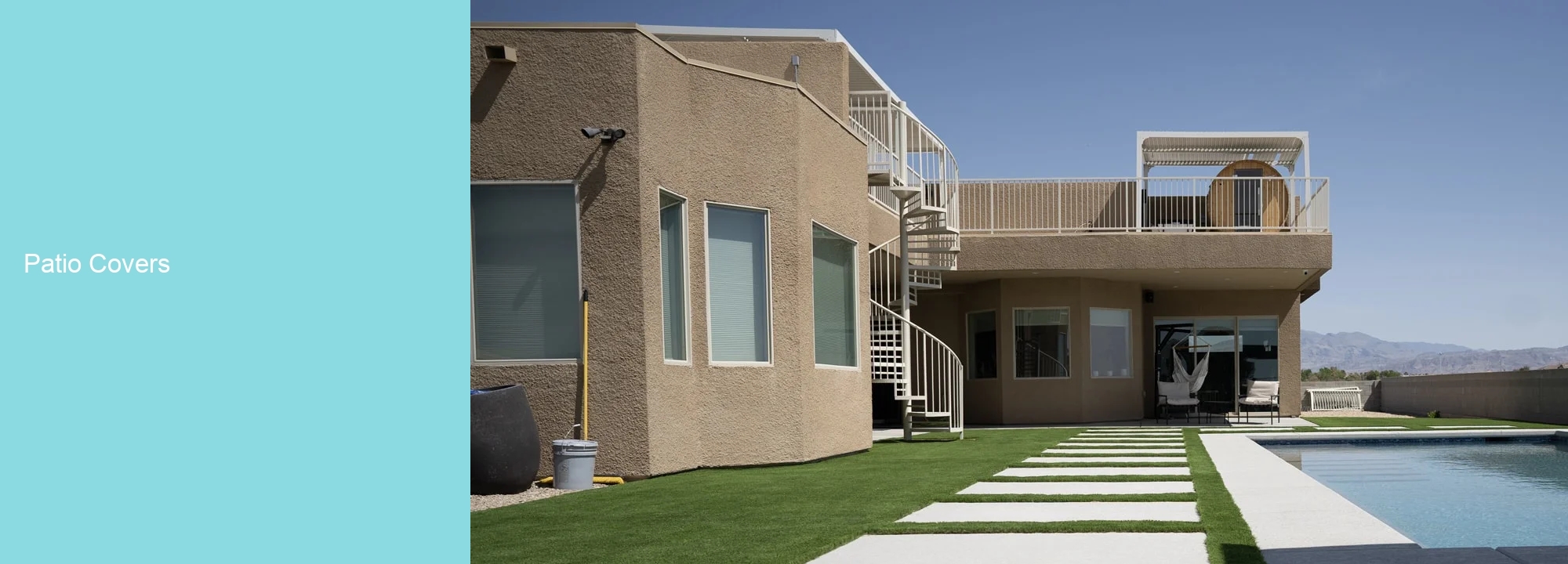

Wood is a classic choice for patio covers, offering an organic aesthetic that complements most outdoor living spaces. It's versatile in design and can be painted or stained to match your home decor. However, it requires regular maintenance to prevent rotting and insect damage.
Metal patio covers are known for their durability and strength. Aluminum, in particular, is lightweight yet sturdy, resistant to rust, and requires minimal maintenance. While not as decorative as wood, metal covers can withstand harsh weather conditions better.
Vinyl is another popular material for patio covers due to its affordability and low-maintenance nature. Unlike wood, it doesn't splinter or decay over time. Plus, vinyl comes in various colors and styles that mimic the texture of natural wood while providing superior longevity.
Fabric offers flexibility in terms of style and color options for custom patio covers. They are ideal for homeowners who want temporary shade solutions during summer months as they can be easily removed or replaced. However, fabric materials may not hold up well against extreme weather conditions.
Polycarbonate is a type of plastic that's gaining popularity for its durability and light-transmitting properties. This material allows some sunlight through while protecting you from harmful UV rays - perfect if you wish to have a bright yet shaded outdoor space.
The design process for custom patio covers begins with an initial consultation. This involves meeting with a professional designer to discuss your vision, needs, and preferences for your outdoor living space. You may have specific requirements regarding the style, size, materials, and other features of the patio cover. The designer will take all these factors into account to create a preliminary design.
Based on the information gathered during the initial consultation, the designer will develop a preliminary design for your custom patio cover. They typically present this as a sketch or 2D rendering so you can visualize how it would look in your outdoor space. It's essential to review this preliminary design thoroughly and provide feedback so that any necessary changes can be made before moving on to the next stage.
Once all changes have been incorporated into the preliminary design, it is transformed into a final detailed plan. This usually includes 3D renderings or even virtual reality representations of the proposed patio cover in its intended environment. At this point, you should review every detail carefully before giving approval for construction to begin.
After getting approval on the final design, actual construction of your custom patio cover commences. Skilled craftsmen use high-quality materials to build each component according to precise specifications from the approved design plan. Once completed, they install it in your outdoor living space ensuring stability and durability while maintaining aesthetic appeal.
When choosing a custom patio cover, the material it's made from should be one of your primary considerations. The material can affect both the aesthetics and durability of the cover. Patio covers come in various materials such as wood, metal, vinyl, and fabric. Each has its own advantages and disadvantages in terms of appearance, maintenance requirements, weather resistance, and lifespan.
Another significant factor to consider is the size and style of your patio cover. This decision should be driven by both functional needs and aesthetic preferences. Consider how much shade you want your cover to provide; larger covers offer more shade but may limit natural light. The style should complement your home's architecture for a cohesive look—contemporary homes may suit sleek metal covers while traditional houses might benefit from classic wooden styles. Always ensure that the chosen custom patio cover enhances your outdoor living space rather than detracting from it.
Regular cleaning is essential in the maintenance of your custom patio cover. It's crucial to keep the area free from dirt, bird droppings, and other debris that can accumulate over time. Depending on the material your cover is made from, a simple hose down may suffice. If it's more durable like metal or vinyl, consider using a mild detergent with a soft brush for deep cleaning.
Periodically inspect your patio cover for any signs of damage. Look out for cracks, rust spots or peeling paint that could indicate wear and tear. Early detection allows you to address these issues before they escalate into bigger problems that might require expensive repairs or replacement.
Once you've identified any damaged areas, act swiftly to repair them. This could involve resealing cracks in wooden covers, repainting chipped areas or replacing rusted parts in metal covers. Regular maintenance tasks such as tightening loose screws and bolts also help prolong the lifespan of your custom patio cover.
Consider taking protective measures based on your local climate conditions. For instance, applying waterproof sealants can be beneficial if you live in an area prone to heavy rainfall. Similarly, UV-resistant coatings are useful under strong sunlight to prevent fading and deterioration due to UV rays exposure.